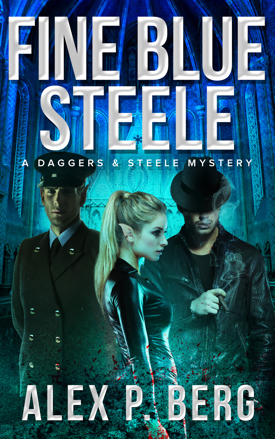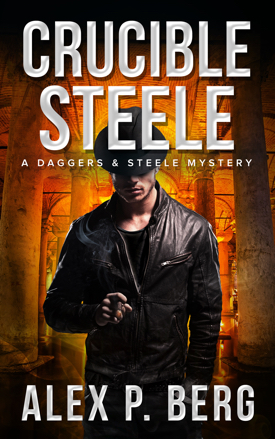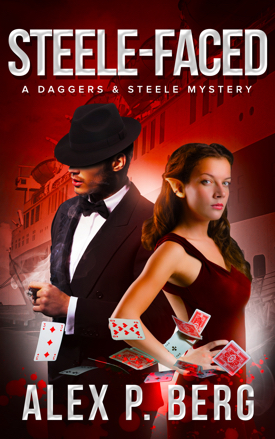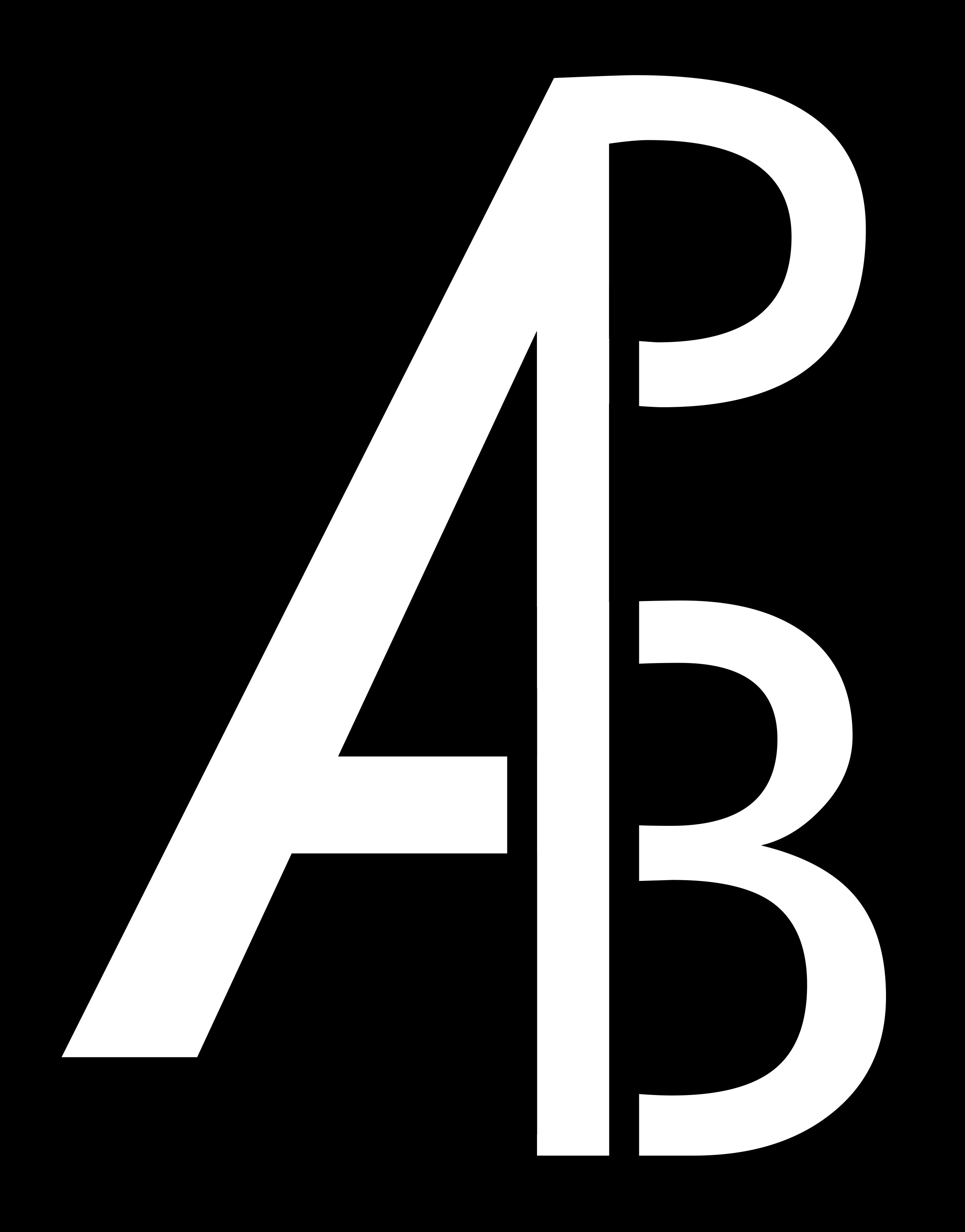Red Hot Steele was the second novel I ever wrote. I started it on a plane while en route to the first writing conference I would ever attend. I still remember sitting there in an airport while on a layover, tapping away at the keys, feeling absolutely giddy while writing it. Part of that was the thought that I’d learn enough about the business of writing while at said conference to put me on the path to becoming a professional writer, but a larger part, I think, was that the book I was writing was so much fun.
Though I never felt like I’d found an authentic voice while writing my first novel (an epic fantasy), Red Hot Steele felt entirely different. Jake Daggers was a big part of the reason why. He was an inherently flawed character, rude and cocky and sexist among other things, but he was good at his job and there was an honest, decent core to him that made him sympathetic despite his demeanor. To this day, he’s my favorite character I’ve written.
Anyway, in part one of this retrospective, I talked a bit about the origins of the series and reviewed books one and two, Red Hot Steele and Cold Hard Steele. It’s taking me a little longer than I hoped to churn through my rereads of the rest of the series, but here are my thoughts on books three through six, several years after initially penning them:

Time to Steele: This was the second and final novel in the series that was inspired by an episode of the TV show Castle, and it was actually the novel I outlined the fastest, taking just three days compared to an average of two to three weeks for most others. It’s also the only novel in the series that features a science fiction element (time-travel) as opposed to a supernatural one, but I nonetheless think the book turned out great. We start to get a sense of what motivates Daggers beyond his jokester persona, and the supporting cast is evolving, too. It’s also the first book I wrote where as the reader you’re not 100% sure you know exactly what happened at the end of the story, which if you’ve read the whole series, you know is a tactic I employed a few more times later on.

Fine Blue Steele: This novel is the first in the series that throws a wrench into Daggers’ personal story arc. Up until now the relationship between him and Steele had been progressing nicely. Daggers has been learning, evolving, and showing he’s not as one-dimensional as he first presented himself, but in this novel, he stumbles and falls on his face. Even worse, it’s an entirely self-inflicted wound. Though he more or less rebounds by the end of the story, it’s a reminder that he’s a flawed character. He shoots himself in the foot repeatedly, and it’s hard for him not to. Thankfully, Steele realizes this better than he does, which is why she’s such a good foil to him. Also, this novel is the first in which the detectives are solving several different cases simultaneously, even if they don’t know it. It’s also the first that presents some truly mind-bending crime scenes (or the second, depending on how you view the events of Cold Hard Steele). All in all, a great entry.

Crucible Steele: As you can probably guess from the cover, this entry in the series is more of a Daggers mystery than a Daggers & Steele one. Daggers is on his own for the lion’s share of this novel, which made it a bit of a challenge to write. As you might imagine, you tend to have more conflict when there are multiple characters in a scene! Also, despite a lot of fans referring to this series as noir urban fantasy, this is the first book in the series that incorporates more traditional noir fiction elements, including tackling themes of police corruption and the blurred line between right and wrong. Daggers’ isolation in this one also means there isn’t much development between him and Steele—at least until the very end, that is. Nonetheless, the way this one wraps up leaves a foundation in place for the next two novels in the series, the first of which is…

Steele-Faced: This book was inspired by countless poker movies, most notably Casino Royale and Rounders, but of course, given that it’s a Daggers & Steele novel, I had to incorporate my usual supernatural twist. In re-reading it, I have to admit some of the world-building is a little incongruous. I mean, if the city is just getting electrified a few books prior, then it’s probably a stretch to think that a massive, Titanic-like ship was being built at the same time, but I always took liberties in terms of technology levels in this series (something a few people were always quick to remind me of in reviews!) Nonetheless, the real treat in this novel is the evolution of Daggers & Steele’s personal relationship, which culminates in a satisfying encounter. Maybe not the strongest novel of the ten, but a good one nonetheless.
That’s it for this round. Next time, I’ll tackle the final four novels in the series, and see if I can drum up any other insights that I may have overlooked.
– Alex
